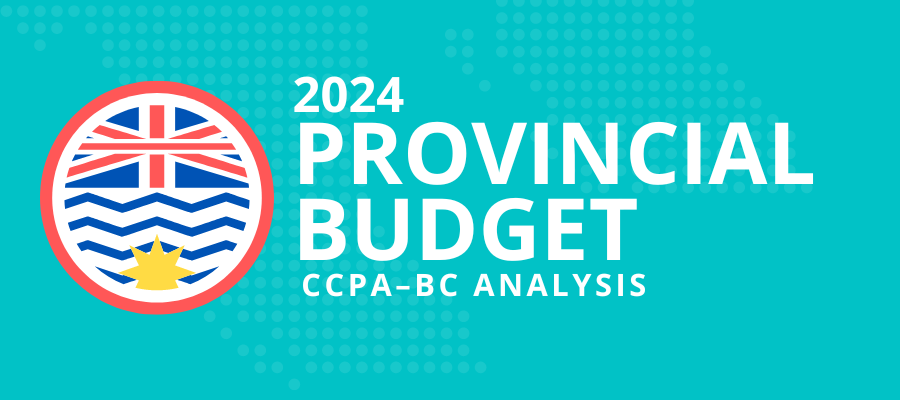BC’s poverty reduction plans: Progress and next steps

After years of the previous BC government refusing to develop a poverty reduction plan, the new provincial government is finally moving forward on a plan. The Confidence and Supply Agreement between the BC NDP and Greens includes a commitment to “design and implement a province-wide poverty reduction strategy.”
This is particularly gratifying for us at CCPA. We convened the original table in 2008 that ultimately became the BC Poverty Reduction Coalition (PRC). And as founding members of the PRC, we’ve been advocating for a comprehensive plan ever since.
At long last, BC will no longer be the only province in Canada without a plan.
The lead provincial minister responsible for developing this plan is Shane Simpson. In the fall of 2017 he struck an advisory forum, and also launched an extensive public consultation process. That process, which culminated at the end of March, hosted meetings across the province and collected input from the public. The CCPA made a submission, and we have met with the Minister three times to share our expertise in the design of the plan.
According to the government’s schedule, enabling legislation for a plan—including legislated targets and timelines—will be tabled in the Fall sitting of the Legislature, and the Minister is to present the government’s full plan by the end of this calendar year.
As we wrote in our submission, “Now it is time to deliver with a plan that is bold and ambitious, that will produce meaningful results, and that will stand the test of time. Having been national laggards on this file for years, BC now has a chance to lead.”
Now is the time to keep the pressure up, and in particular to make clear that the new government needs to substantially raise welfare rates and take strong action to further control rent increases.
As the CCPA and PRC have long noted, a comprehensive plan must include:
- Legislated targets and timelines, along with clear accountability mechanisms to ensure these targets are met.
- A human rights foundation.
- A whole-of-government approach (wherein all ministries must show how they are contributing to poverty reduction).
- Bold action across a number of core pillars, including:
- Significant increases to social assistance rates and an end to rules and requirements that discourage, delay and deny access to social assistance. Seeking assistance should not harm a person’s dignity.
- Increasing the earnings of those in the low-wage workforce through rapid and significant increases in the minimum wage, adoption of living wage policies by government ministries and agencies, and strengthening employment standards.
- Large-scale expansion of social and co-op housing (we have called for 10,000 units per year), and strengthening rent controls.
- Universal, affordable and quality public child care.
- Expansion of community health services for seniors, people with disabilities, and those with mental health illnesses and addictions, and enhancements to dental and eye care for low-income people.
- Greater access to post-secondary education and training for low-income people, and improved services for special needs students in the K-12 education system.
- Targeted actions to reduce poverty among populations where poverty rates are most acute.
It’s great to see that the government has started to take important steps in some of these areas, notably with respect to child care, new housing, dental care and the minimum wage. Last summer, we saw small increases to welfare rates (after nearly ten years of frozen rates), the elimination of tuition fees for Adult Basic Education and English Language Learners, and expanded post-secondary tuition-waivers for foster youth aging out of care.
But as we noted in our submission, a comprehensive plan requires action in many more areas. And we highlighted two issues requiring urgent attention:
- It is vital that the legislated targets tackle the depth and not merely the breadth of poverty. Meaning, we need targets that get all British Columbians out of deep poverty, as we also significantly reduce the overall poverty rate.The depth target long advocated by the PRC and ourselves has been to commit that, within two years, every British Columbian has an income that reaches at least 75 per cent of the poverty line.Targets aimed at eliminating the most extreme and severe forms of poverty—such as homelessness and hunger—are also necessary.Failure to include depth targets such as these in the BC plan risks leaving the poorest and most vulnerable behind, and would absolve the government of necessary action in the areas over which it has the most direct responsibility, namely social assistance and housing.
- While the government has begun to take needed action to cool the housing market and build new low-income housing, more is urgently needed to control rent increases.This issue arguably represents the greatest threat not only to the poverty reduction plan, but to the government’s overall policy agenda. Given escalating housing costs, there is a grave risk that all the improvements and gains experienced for low-income people due to minimum wage increases, welfare rate increases, child care fee reductions and more will be wiped out by rent increases.The government was quick to end the fixed-term lease loophole last fall. But other reforms are urgently needed to the Residential Tenancy Act (RTA). Currently, the RTA only limits rent increases for existing tenants. Once a tenant moves or is evicted, however, landlords are free to increase the rent as they wish. Moreover, even when rent control is in place, the current RTA allows for annual increases of two per cent beyond the inflation rate (CPI). Compounded, this means rents have been far out-stripping inflation in recent years.Given this, we strongly recommend, as does the PRC, that the provincial government introduce stronger tenant protections including tighter limits on annual rent increases, tying rent control to the unit (not the tenant), and strengthening the application and enforcement of the Residential Tenancy Act.
Hopefully—and with sufficient pressure—we will see such actions in the fall.
Topics: Poverty, inequality & welfare


